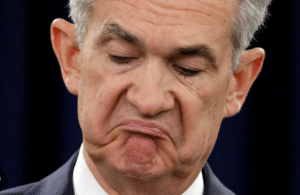#HawkishMessage #USCentralBank #InterestRates #23YearHigh #InflationForecast #EconomicPolicy #FederalReserve #MonetaryPolicy
In a significant move that underlines the aggressive stance of the U.S. central bank on combating inflation, the bank has opted to maintain interest rates at a 23-year peak. This decision underscores the challenges faced by policymakers as they continue to navigate a path between fostering economic growth and curbing inflationary pressures. The decision to hold rates comes amid heightened concerns over inflation, with the bank also revising its inflation forecast upwards. This adjustment suggests that the central bank anticipates a more stubborn inflationary environment than previously thought, possibly hinting at a prolonged period of elevated interest rates to ensure price stability.
The central bank’s hawkish message sends a clear signal to markets and consumers alike about its determination to fight inflation, even at the risk of applying brakes to economic growth. By maintaining interest rates at such a high level, the bank aims to cool down demand by making borrowing more expensive. This, in theory, should help to bring down inflation over time. However, this approach also carries risks, particularly the potential to slow down economic activity too much, leading to a contraction. The bank’s updated inflation forecast indicates that it is braced for this battle, recognizing the need to be resolute in its efforts to anchor inflation expectations and preserve the economy’s long-term health.
Moreover, the central bank’s strategy reflects a broader global context where several major economies are grappling with similar inflationary pressures, often attributed to lingering supply chain disruptions, energy price volatility, and post-pandemic recovery dynamics. Central banks worldwide are thus faced with the delicate task of tightening monetary policy without precipitating a downturn. In this environment, the U.S. central bank’s policy decisions and forecasts are being closely watched, as they have major implications for global financial markets, exchange rates, and international trade flows. The decision to keep rates at a 23-year high, coupled with a revised inflation outlook, not only highlights the complexities of current economic conditions but also sets the stage for a potentially challenging period ahead as policymakers and market participants adjust to this new reality.







Comments are closed.